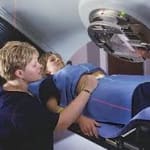The 10 Highest-Paying Healthcare Jobs in the U.S.
The enormous healthcare industry provides an array of rewarding, high-paying careers for people without a medical license.
Healthcare employees work with caring workers, cutting-edge technology, and patients grateful for their help. There’s rarely a dull moment in the fast-paced world of healthcare.
Related articles:
The 50 Best Online Colleges & Universities 2023
The Best Online Colleges by State
The Best Online Degrees
The Bureau of Labor Statistics (BLS) expects the healthcare industry to create more new jobs from 2023 to 2033 than any other industry. If you’re looking for a high-paying, in-demand job in the healthcare industry, these 10 are worthy of your consideration:
Certified Registered Nurse Anesthetist
 What they do: Certified registered nurse anesthetists (CRNAs) administer anesthesia to patients before and after surgical, diagnostic, therapeutic, and obstetrical procedures. They also provide pain management and emergency services, including airway management. CRNAs also oversee the health of patients post-surgery. They’re an advanced practice registered nurse.
What they do: Certified registered nurse anesthetists (CRNAs) administer anesthesia to patients before and after surgical, diagnostic, therapeutic, and obstetrical procedures. They also provide pain management and emergency services, including airway management. CRNAs also oversee the health of patients post-surgery. They’re an advanced practice registered nurse.
CRNAs can work independently. Their practice varies by state. They provide anesthetics to patients in every practice setting and for every type of surgery or procedure. They’re the only anesthesia-providers in most rural hospitals.
The Bureau of Labor Statistics forecasts a high demand for CRNAs, especially in medically underserved areas such as rural areas and inner cities.
Education requirements: CRNAs need a bachelor’s degree in nursing, or other appropriate bachelor’s degree, and at least a master’s degree from an accredited nurse anesthesia educational program. The programs take 24 to 36 months to complete, and require a current registered nurse’s license.
CRNAs have to pass a national certification examination and have at least one year of work experience in an acute-care nursing setting, such as a surgical intensive-care unit or a medical intensive-care unit.
Average annual salary: $212,650 (Bureau of Labor Statistics, 2023)
Featured Schools
Pharmacist
 What they do: Pharmacists spend less time filling prescriptions and more time providing information and advice; assistants do a lot of the prescription-filling. One of their most important tasks is making sure patients can safely take multiple drugs together.
What they do: Pharmacists spend less time filling prescriptions and more time providing information and advice; assistants do a lot of the prescription-filling. One of their most important tasks is making sure patients can safely take multiple drugs together.
Most pharmacists work in community pharmacies. One fourth of pharmacists work in hospitals. Besides working in pharmacies, some pharmacists work for pharmaceutical companies on new-drug development. Some pharmacists specialize in particular drug-therapy areas, such as geriatric pharmacy, oncology, or nuclear pharmacy.
The Bureau of Labor Statistics forecasts a 5% employment growth for pharmacists from 2023 to 2033.
Education requirements: Pharmacists need a Pharm.D. degree from an accredited college or school of pharmacy. Pharm.D. programs typically take four years to finish. Applicants to a Pharm.D. program need two or three years of prior university coursework. This requirement typically includes courses in chemistry, biology, physics, mathematics, humanities, and social sciences.
Average annual salary: $136,030 (Bureau of Labor Statistics, 2023)
Medical Dosimetrist
 What they do: As part of a radiation-oncology team, a medical dosimetrist helps treat cancer patients by calculating the radiation dose required to destroy a tumor and leave the healthy tissue intact. Medical dosimetrists, also known as radiation therapy dosimetrists, create complex treatment plans using sophisticated 3-D computer models to destroy patients’ cancerous tumors.
What they do: As part of a radiation-oncology team, a medical dosimetrist helps treat cancer patients by calculating the radiation dose required to destroy a tumor and leave the healthy tissue intact. Medical dosimetrists, also known as radiation therapy dosimetrists, create complex treatment plans using sophisticated 3-D computer models to destroy patients’ cancerous tumors.
Many medical dosimetrists begin in the field as radiation therapists. There’s a growing demand for all professionals who provide radiation therapy, including medical dosimetrists.
Education requirements: Radiation therapy certification and specialized training or completing a two-year dosimetry program.
Average annual salary: $132,880 (Bureau of Labor Statistics, 2023)
Cardiovascular Perfusionist
 What they do: Cardiovascular perfusionists maintain heart and lung function during open-heart operations, vascular surgery, and orthopedic and other medical procedures. During surgery, a cardiovascular perfusionist operates bypass machines and other equipment that temporarily controls a patient’s circulation and respiratory function.
What they do: Cardiovascular perfusionists maintain heart and lung function during open-heart operations, vascular surgery, and orthopedic and other medical procedures. During surgery, a cardiovascular perfusionist operates bypass machines and other equipment that temporarily controls a patient’s circulation and respiratory function.
Education requirements: Cardiovascular perfusionists are required to graduate from an accredited program which may take from one to four years to complete. Some employers require a bachelor’s degree. Typically, applicants are required to complete a wide array of college-level science and math courses before enrolling in a program.
Average annual salary: $$144,146 (Payscale, 2023)
Certified Nurse-Midwife
 What they do: Certified nurse-midwives have an integral role in the health and welfare of mothers and babies. They’re very involved with labor and the delivery of babies. A certified nurse-midwife typically coordinates all aspects of the birthing procedure, either independently or as a member of a healthcare team. Certified nurse-midwives provide a personalized style of healthcare management.
What they do: Certified nurse-midwives have an integral role in the health and welfare of mothers and babies. They’re very involved with labor and the delivery of babies. A certified nurse-midwife typically coordinates all aspects of the birthing procedure, either independently or as a member of a healthcare team. Certified nurse-midwives provide a personalized style of healthcare management.
Certified nurse-midwives also provide prenatal and gynecological care, perform physical exams, provide family planning and birth-control counseling, and prescribe birth-control medications. They work in hospitals, private practices, birthing centers, and home settings.
The Bureau of Labor Statistics forecasts a high demand for certified nurse-midwives, especially in medically undeserved areas such as rural areas and inner cities.
Education requirements: Certified nurse-midwives are required to complete a Certified Nurse-Midwife program. A midwifery degree is a graduate degree. Most programs require a prior bachelor’s degree; however, many certified nurse-midwife schools provide an RN-to-MSN program for nurses with an associate degree. Some programs require applicants to be registered nurses.
Average annual salary: $129,650 (Bureau of Labor Statistics, 2023)
Nurse Practitioner
 What they do: Nurse practitioners serve as primary- and specialty-care providers. Nurse practitioners provide diagnosis, treatments, and consultations. They educate patients regarding preventive care and their prescribed treatments. Some nurse practitioners serve as a patient’s primary healthcare provider. They can work independently or as part of a treatment team. Some nurse practitioners prescribe medications.
What they do: Nurse practitioners serve as primary- and specialty-care providers. Nurse practitioners provide diagnosis, treatments, and consultations. They educate patients regarding preventive care and their prescribed treatments. Some nurse practitioners serve as a patient’s primary healthcare provider. They can work independently or as part of a treatment team. Some nurse practitioners prescribe medications.
According to the American Nurses Association, about 60 to 80 percent of primary and preventive care can be performed by nurse practitioners. They’re increasingly attractive to healthcare employers because they can provide a lot of the healthcare typically provided by physicians and they receive less pay.
Here are some of the most common specialties:
- Family practice
- Women’s health
- Adult practice
- Acute care
- Pediatrics
- Geriatrics
The Bureau of Labor Statistics forecasts a high demand for nurse practitioners, especially in medically underserved areas such as rural areas and inner cities.
Education requirements: Nurse practitioners need at least a Master of Science in Nursing (MSN) degree. The program usually takes two to three years to complete. Applicants to an MSN program are required to have a prior Bachelor of Science in Nursing (BSN) or Bachelor’s Degree in Nursing (BDN) degree.
Average annual salary: $129,480 (Bureau of Labor Statistics, 2023)
Featured Schools
Physician Assistant
 What they do: Physician assistants perform a variety of healthcare services that traditionally were provided by doctors. They practice medicine under the supervision of a physician. A physician assistant diagnoses and treats illnesses and develops and implements treatment plans. Some physician assistants assist in surgeries. Their duties vary with their training and experience, as well as by state laws.
What they do: Physician assistants perform a variety of healthcare services that traditionally were provided by doctors. They practice medicine under the supervision of a physician. A physician assistant diagnoses and treats illnesses and develops and implements treatment plans. Some physician assistants assist in surgeries. Their duties vary with their training and experience, as well as by state laws.
In most states, a physician assistant can treat patients while the doctor is out of the office. In some inner-city or rural clinics, physician assistants may be the primary-care provider; a physician may only be present one or two days per week. In these situations, they consult with a supervising physician and other medical professionals as needed and as required by law. In many states, physician assistants can write prescriptions.
The Bureau of Labor Statistics has forecasted a 39-percent employment growth for physician assistants from 2008 to 2018, which is much faster than the average for all occupations.
Education requirements: Physician-assistant education programs usually take at least two years to complete. Most of the programs are provided by allied health schools, medical schools, four-year colleges, and academic health centers.
Most applicants to physician-assistant educational programs have a college degree and some health-related work experience. However, admissions requirements vary by program. Many physician assistants have prior work experience as registered nurses, emergency medical technicians, or paramedics.
Average annual salary: $130,020 (Bureau of Labor Statistics, 2023)
Physical Therapist
 What they do: Physical therapists, also known as PTs, diagnose and treat people of all ages who have a limited ability to move and perform functional activities due to illness or disability. They help patients build flexibility and strength. Physical therapists create a plan utilizing treatment techniques to promote a patient’s ability to move, restore function, reduce pain, or prevent disability. They need to be good motivators. According to the Bureau of Labor Statistics about 60 percent of physical therapists work in hospitals.
What they do: Physical therapists, also known as PTs, diagnose and treat people of all ages who have a limited ability to move and perform functional activities due to illness or disability. They help patients build flexibility and strength. Physical therapists create a plan utilizing treatment techniques to promote a patient’s ability to move, restore function, reduce pain, or prevent disability. They need to be good motivators. According to the Bureau of Labor Statistics about 60 percent of physical therapists work in hospitals.
Education requirements: A master’s degree or a doctoral degree from an accredited physical therapy program. Master’s degree programs usually take from two to two-and-one-half years to complete, whereas doctoral degree programs take three years to complete.
The Bureau of Labor Statistics forecasts a 30-percent employment growth from 2008 to 2018, much faster than the average for all occupations.
Average annual salary: $99,710 (Bureau of Labor Statistics, 2023)
Radiation Therapist
 What they do: Medical advances have made radiation therapists among the most in-demand workers in the field of radiologic technology. A radiation therapist needs to precisely hit the cancer with ionizing radiation without damaging nearby healthy tissue. Improvements in treating cancer have improved survival rates, so more people require therapy. Radiation therapists must be detail-oriented.
What they do: Medical advances have made radiation therapists among the most in-demand workers in the field of radiologic technology. A radiation therapist needs to precisely hit the cancer with ionizing radiation without damaging nearby healthy tissue. Improvements in treating cancer have improved survival rates, so more people require therapy. Radiation therapists must be detail-oriented.
Education requirements: Employers usually require a bachelor’s degree or an associate;s degree in radiation therapy. Some states and employers require radiation therapists to be certified by the American Registry of Radiologic Technologists (ARRT).
The Bureau of Labor Statistics forecasts a 27-percent employment growth for radiation therapists from 2008 to 2018, much faster than the average for all occupations.
Average annual salary: $98,300 (Bureau of Labor Statistics, 2023)
Occupational Therapist
 What they do: Occupational therapists help people with disabling physical, mental, developmental, and emotional conditions recover or develop and maintain daily living and work skills. Occupational therapists helps their patients have productive and independent lives. They help patients such as recently disabled people or amputees compensate for the loss of function.
What they do: Occupational therapists help people with disabling physical, mental, developmental, and emotional conditions recover or develop and maintain daily living and work skills. Occupational therapists helps their patients have productive and independent lives. They help patients such as recently disabled people or amputees compensate for the loss of function.
Occupational therapists also help people enhance their motor skills and reasoning and perceptual abilities. Some occupational therapists have a specialty. They need to be caring and compassionate, and often receive a tremendous sense of accomplishment.
The Bureau of Labor Statistics forecasts a 26-percent employment growth from 2008 to 2018, much faster than the average for all occupations.
Education requirements: Occupational therapists need a master’s degree or higher. They’re required to take a program accredited by the Accreditation Council for Occupational Therapy Education (ACOTE) in order to take the national certifying exam.
Average annual salary: $96,370 (Bureau of Labor Statistics, 2023)


